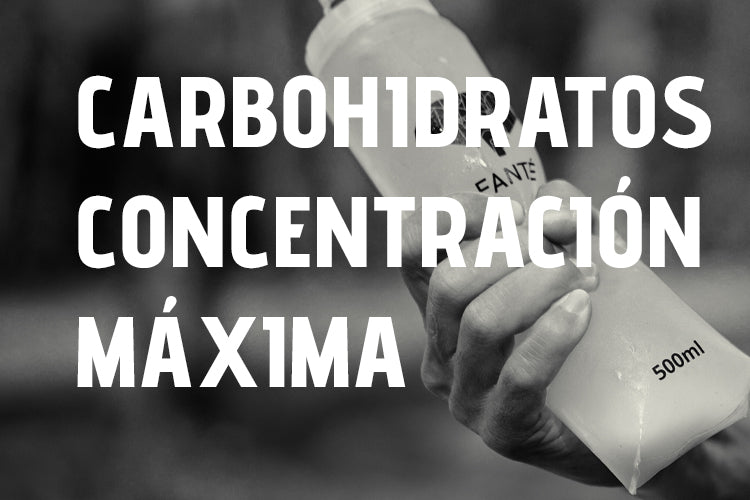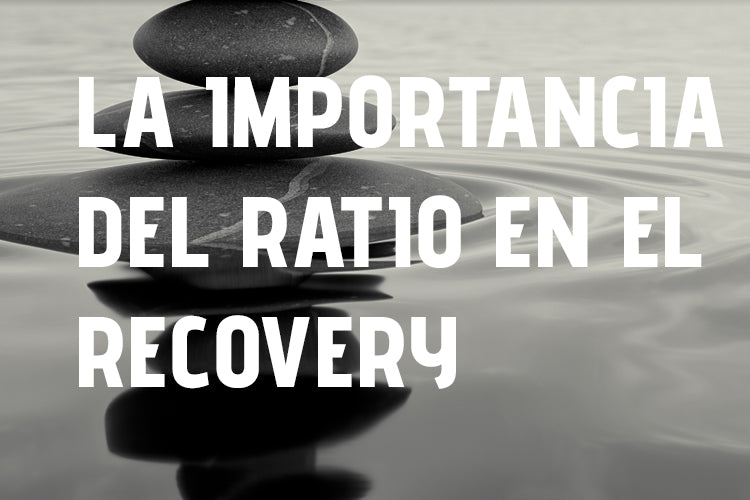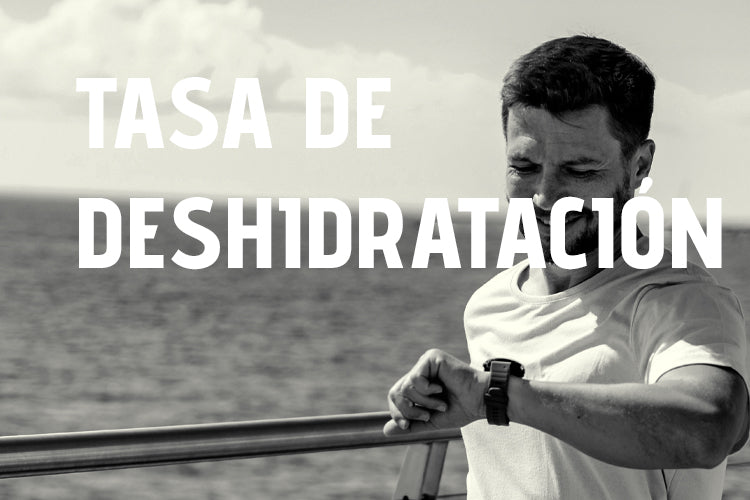One of the main goals of rehydration solutions (ORS) and sports drinks is to make fluids available for use within the body as quickly as possible. Drinks designed for use as ORS and sports nutrition contain a mixture of carbohydrates and electrolytes, with sodium being the main electrolyte.
The carbohydrates in ORS (carbohydrate-containing beverages) come primarily in the form of glucose, although they may also contain sucrose, maltodextrin, or fructose. Increasing the amount of carbohydrates in a beverage leads to a decrease in fluid transport. (1)
The increase in osmolality due to elevated carbohydrate concentrations leads to a net movement of water into the intestinal lumen, which causes a loss in the body's water reserve and may increase the effects of dehydration (2) .
Previously, it has been shown that electrolyte solutions with 6% CHO lead to greater fluid transport than a 15% glucose solution (3) but there was no difference demonstrated in fluid transport when 6, 8 and 9% glucose and fructose solutions were compared (4).
On the other hand, previous research has suggested that the addition of sodium to ingested beverages will lead to an increase in fluid transport (5) and a reduction in plasma volume change during exercise, indicating greater fluid availability and greater energy supply (6)

As you can see in the photo, gastric emptying over time is similar, although the maximum and sustained assimilation speed is between 3-6%. (7)
Increasing the carbohydrate content of a beverage above 6% can lead to a decrease in fluid transport compared to water or concentrations above 9%.
Increasing the glucose content of the drink above 6% decreased fluid transport compared to water, while the sodium content in the investigated range did not affect fluid transport but did affect the dehydration of the athlete (7) . Therefore, solutions that are above isotonic (>550mg sodium per 750ml bottle) or carbohydrate amounts above 9% concentration would be harmful to the athlete when playing sports. With all this, at FANTÉ we want to go with common sense and empiricism, not with marketing. Our GLUT 5 DRINK range will give you 67.5 grams of carbohydrates with a 1:0.8 ratio in 750ml of water to reach a maximum of 9%, maximizing the total possible amount per bottle but without sacrificing the athlete's maximum performance. In addition, we include 350 mg of sodium in the solution to improve fluid and solute transport.
Davis et al. (8) reported no differences in the appearance of D2O in plasma when comparing 6, 8 and 9% glucose and fructose drinks with water. One possible reason for the discrepancies between these studies is the inclusion of fructose in the drinks of Davis et al. (8) . Fructose is absorbed through GLUT 5 in the intestinal cell membrane (9) , whereas glucose is absorbed by SGLT1 (10) . The inclusion of these carbohydrates that can be transported through multiple transporters may lead to a reduction of the inhibitory effect of hyperosmolarity on fluid absorption (11) . As occurs when we choose to consume the GLUT 5 DRINK and Gel 6 0 range with multiple transporters with a ratio of 1:0.8 in line with scientific evidence.
It has been shown that a 20% carbohydrate solution empties more slowly from the stomach than a 6% solution, that is, there are current brands that sell single doses at a concentration of 18%, 21% and others that are not scientifically proven (12) . Another study reported that carbohydrate concentrations less than 10% do not affect gastric emptying (13) .
Therefore, a drink with a concentration above 9% would slow down gastric emptying and therefore our energy intake.
To better understand this we must first understand how our body works when we ingest it:
Once the ingested beverage has been emptied from the stomach, it enters the small intestine. The proximal section of the small intestine, the duodenum, is the most permeable section of the small intestine. In the duodenum, water is absorbed by an osmotic gradient, so when water is compared to a carbohydrate beverage, it leads to greater fluid absorption in the duodenum and this creates a greater osmotic gradient (11) . The increase in carbohydrate content in the 6 and 9% beverages decreases fluid absorption in the duodenum compared to water (14) .
As the ingested beverage continues down the small intestine to the jejunum, more solutes are absorbed (11) . Glucose absorption via SGLT1 in the small intestine is directly coupled with the absorption of 2 sodium molecules and approximately 300 water molecules (15). Thus, the fluid can be absorbed against a concentration gradient. If the single-dose contains adequate amounts of sodium.
This may explain why the 3% glucose drink led to greater fluid transport than water. Glucose absorption in the jejunum will lead to increased fluid absorption, both through the transcellular SGLT1 pathway and through paracellular pathways, since SGLT1 has been shown to increase the permeability of intestinal anchor junctions (16).
Therefore, we need a drink with a concentration below 9%, containing water and sodium for proper glucose transport into the body. Add to this the fact that our single-dose GLUT 5 DRINK is made with natural products and contains no flavorings, preservatives, or thickeners, and we have a unique product to mitigate the potential gastrointestinal effects these compounds could cause.
That's not all,
Gisolfi et al. (17) investigated fluid absorption from a 6% glucose drink containing either 0.25 or 50 mmol/L sodium and found no differences in fluid absorption. Similarly, during exercise, increasing the amount of sodium from 500 mg sodium in a carbohydrate drink did not lead to an increase in fluid absorption and therefore additional fluid addition was unnecessary (18).
Although sodium may not have any effect on fluid transport, it can still be helpful to include it in carbohydrate-electrolyte drinks.
Including sodium in ingested beverages leads to an increase in their palatability (19) . Palatability is an important factor in voluntary fluid intake (20) , which may be useful in situations such as during prolonged exercise in hot conditions, since fluid intake may allow a lower core body temperature to be maintained compared to no fluid intake and prevents decreased performance (21) . Sodium is also important for rehydration after a period of dehydration, since sodium helps fluid retention to occur.

As seen in this photo, sodium does not change the rate of gastric emptying, but it is a very good way to provide extra sodium per hour to reach the recommended minimum sodium intake. If you'd like to learn more about dehydration, check out our hydration guide .
In conclusion
The drink we use during exercise should be isotonic, that is, have an osmolarity similar to that of blood (280-330 mOsm/kg).
An isotonic drink with GLUT-5 DRINK would have 200-410 mOsm/l. This would improve transport and emptying, and we wouldn't become dehydrated. However, drinks with a high carbohydrate concentration above 9% and above 1 g sodium/liter would have an osmolarity >410, i.e., HYPERTONIC. Solute transport would occur very rapidly, but we would become dehydrated.
So at FANTÉ we have decided to respect the maximum tolerable intake by adjusting carbohydrates and electrolytes according to the evidence.
A 9% carbohydrate drink, with multi-transporter carbohydrates, maltodextrin, and fructose in a 1:0.8 ratio, respectively, and a maximum of 350mg of sodium per 750ml. However, we opted to include 350mg of sodium to use with the Gluten-5 On range, since combined, we would have 700mg of sodium total per hour, i.e., an isotonic drink. It would hydrate us, not dehydrate us. An example of a hypertonic drink is our Glycogen Recovery Drink , since its goal is to absorb the maximum amount of carbohydrates per unit of time. Therefore, we will use this drink post-workout, not during training.
And why maltodextrin and not glucose?
Because maltodextrin gives us a less sweet flavor for palatability control and has a lower osmolarity than glucose, we can add more carbohydrates per ml without affecting the gastric emptying rate.
Literature
- Maughan RJ, Leiper J.B (1999). Limitations to fluid replacement during exercise. Can J Appl Physiol 1999, 24:173-187
- Gisolfi CV, Summers RW, Schedl HP, Bleiler TL, Oppliger R. A (1990). Human intestinal water absorption: direct vs. indirect measurements. Am J Physiol, 258:G216-222
- Davis JM, Lamb DR, Burgess WA, Bartoli W.P (1987). Accumulation of deuterium oxide in body fluids after ingestion of D2O-labeled beverages. J Appl Physiol, 63:2060-2066
- A., Bartoli W. P (1990). Fluid availability and sports drinks differing in carbohydrate type and concentration. Am J Clin Nutr 51:1054–1057
- Leiper JB, Maughan R.J (1988). Experimental models for the investigation of water and solute transport in man. Implications for oral rehydration solutions. Drugs, 36 (Suppl 4): 65-79
- Barr SI, Costill DL, Fink W. J (1991). Fluid replacement during prolonged exercise: effects of water, saline, or no fluid. Med Sci Sports Exerc 23
- Asker Jeukendrup, Kevin Currel, Juliette Clarke, Johnny Cole, and Andrew K. Blannin. Effect of Glucose and Sodium Content of Beverages on Fluid Transport. School of Sport and Exercise Sciences, University of Birmingham, Edbbaston, Birmingham, UK. 201
- Davis JM, Burgess WA, Slentz CA, Bartoli W.P (1990). Fluid availability and sports drinks differing in carbohydrate type and concentration. Am J Clin Nutr 51:1054–1057
- Semenza G., Kessler M., Hosang M., Weber J., Schmidt U (1984). Biochemistry of the Na+, D-glucose cotransporter of the small-intestinal brush-border membrane. The state of the art in 1984. Biochim Biophys Acta, 779:343-379
- Kellett G.L (2001). The facilitated component of intestinal glucose absorption. J Physiol, 531:585-595
- Shi X., Summers RW, Schedl HP, Flanagan SW, Chang R., Gisolfi C. V (1995). Effects of carbohydrate type and concentration and solution osmolality on water absorption. Med Sci Sports Exerc, 27:1607-1615
- Murray R., Bartoli WP, Eddy DE, Horn M. K (1997). Gastric emptying and plasma deuterium accumulation following ingestion of water and two carbohydrate-electrolyte beverages. Int J Sport Nutr, 7:144-153
- Zachwieja JJ, Costill DL, Beard GC, Robergs RA, Pascoe DD, Anderson D. E (1992). The effects of a carbonated carbohydrate drink on gastric emptying, gastrointestinal distress, and exercise performance. Int J Sport Nutr, 2:229-238
- Lambert GP, Chang RT, Xia T., Summers RW, Gisolfi C. V (1997). Absorption from different intestinal segments during exercise. J Appl Physiol, 83:204-212
- Loo DD, Zeuthen T., Chandy G., Wright E. M (1996). Cotransport of water by the Na+/glucose cotransporter. Proc Natl Acad Sci USA, 93:13367-13370
- Turner JR (2000). Show me the pathway! Regulation of paracellular permeability by Na(+)-glucose cotransport. Adv Drug Deliv Rev, 41:265-281
- Gisolfi CV, Summers RD, Schedl HP, Bleiler T. L (1995). Effect of sodium concentration in a carbohydrate-electrolyte solution on intestinal absorption. Med Sci Sports Exerc, 27:1414-1420
- Gisolfi CV, Lambert GP, Summers R.W (2001). Intestinal fluid absorption during exercise: role of sport drink osmolality and [Na+]. Med Sci Sports Exerc, 33:907-915
- Murray R (1987). The effects of consuming carbohydrate-electrolyte beverages on gastric emptying and fluid absorption during and following exercise. Sports Med, 4:322-351
- Minehan MR, Riley MD, Burke L. M (2002). Effect of flavor and awareness of kilojoule content of drinks on preference and fluid balance in team sports. Int J Sport Nutr Exerc Metab, 12:81-92
- Sawka MN, Montain SJ, Latzka W.A (2001). Hydration effects on thermoregulation and performance in the heat. Comp Biochem Physiol A Mol Integr Physiol, 128:679-690




Leave a comment
This site is protected by hCaptcha and the hCaptcha Privacy Policy and Terms of Service apply.